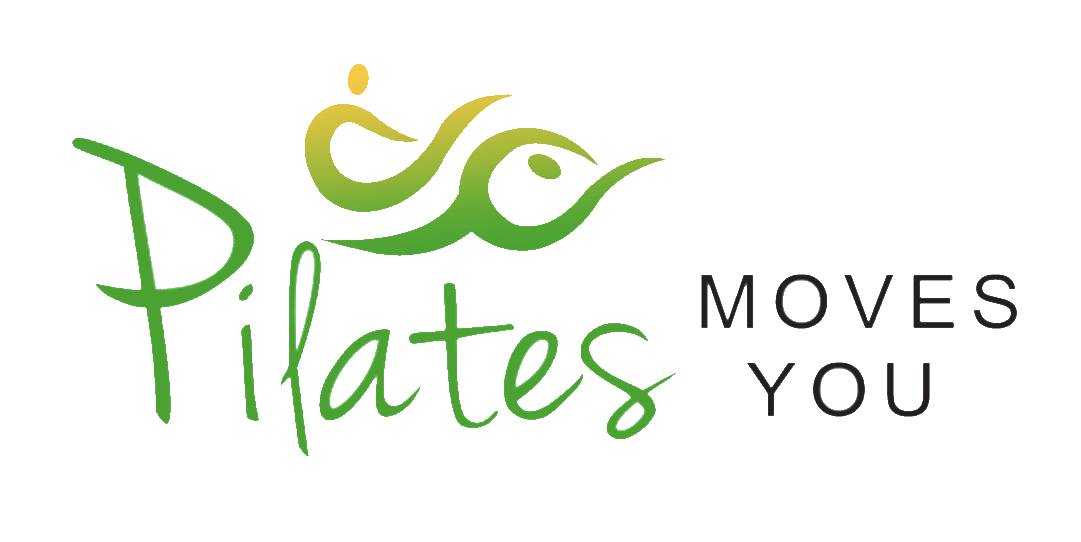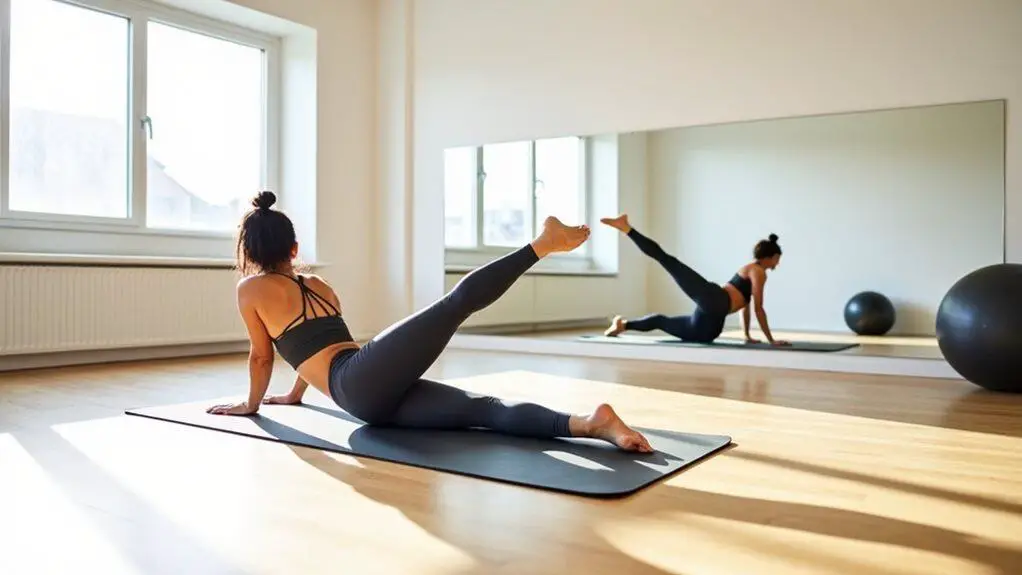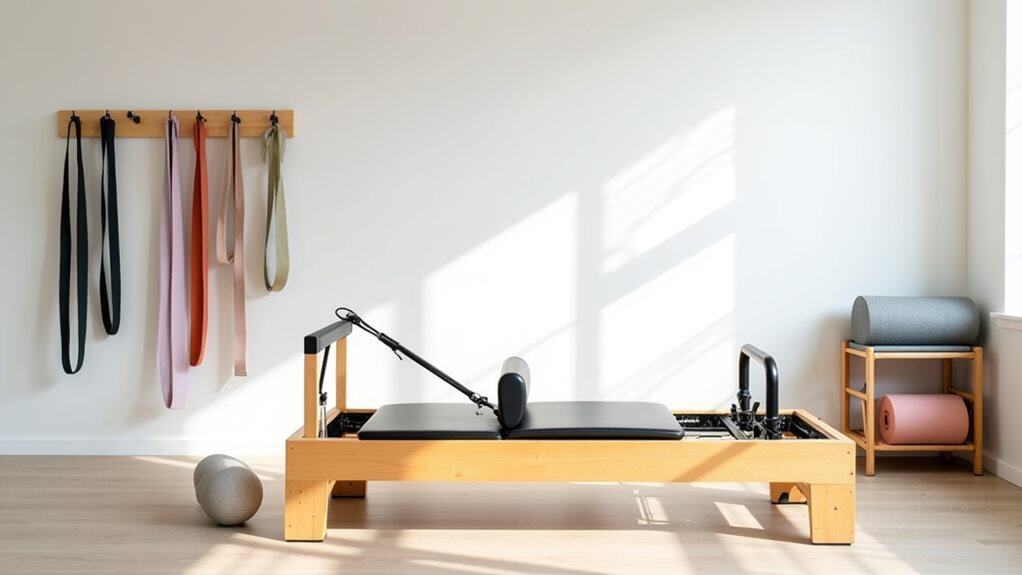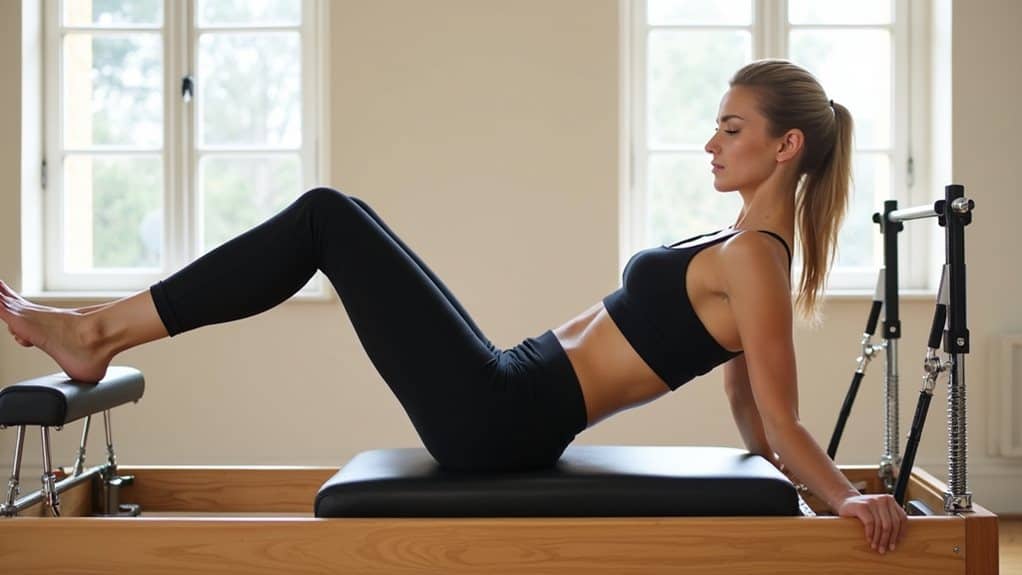Pilates and CrossFit are exercises that are gaining popularity, thanks to social media and many TV shows. Perhaps you are even considering giving each of the workouts a try yourself. But how do you choose? Is Pilates better than CrossFit?
In general, Pilates may be better than Crossfit if you are looking for an exercise that is low-impact and therapeutic. Pilates may also work for you if you look for a long, lean, toned look rather than robust, muscled, and bulked up. However, CrossFit may be better if you have different fitness needs.
In this article, I discuss Pilates and CrossFit. I look into their similarities and differences and see if one is better than the other.
I also discuss how you can choose the best workout by thinking about what you want from your workout first.
What Is Pilates?
Pilates is a type of body-mind exercise. It contains about 500 aerobic and non-aerobic exercises focusing on the core body. Each exercise also starts with a different way of breathing and ends with a rhythmic pattern. Pilates might help with flexibility, better posture, relieving stress, and so on.
Pilates was created by Joseph Pilates in the early 20th century while working with German soldiers after World War 1.
Many German soldiers returned from the war with injuries, physical impairment, and mental conditions. As a result, they need exercise that is more therapeutic and healing in nature. Pilates was developed with that structure in mind.
As a result, Pilates is guided by principles such as concentration on each movement and using abdominal and lower back muscles. Pilates also focuses on precise, flowing movement patterns and steady, controlled breathing.
In a Pilates session, you may be made to perform poses and stretches that require muscles. In many cases, your own bodyweight is used to provide some resistance to the movements.
A Pilates session may also be slower, compared to HIIT or CrossFit, with perhaps TaiChi or some forms of Yoga even slower.
However, some forms of Pilates also require specialized equipment such as a Pilates ring (magic circle), balance board, or trapeze board. This means Pilates may need some investment to acquire tools.
What Is Crossfit?
CrossFit is a type of high-intensity interval training (HIIT). During CrossFit, you will execute many functional movements that are performed intensely. CrossFit focuses on strength and conditioning and may require a basic fitness and strength level to perform well.
CrossFit can be considered a variant of high-intensity interval training (HIIT) in which functional movements are executed at a high-intensity level. It is a strength and conditioning workout.
It was developed by Greg Glassman and Lauren Jenai in 2000 to bring some competitive nature into exercise. CrossFit is very popular and is now offered in over 13,000 gyms in 120 countries worldwide.
Crossfit includes a variety of strenuous exercises, such as Olympic weightlifting, HIIT, powerlifting, gymnastics, plyometrics, calisthenics, strongman, cardio circuits, and more.
In a typical CrossFit workout, you may be asked to perform movements such as squatting, pulling, pushing, and so on. You also perform different kinds of squats, push-ups, and weight lifting for a set amount of time.
Aside from bodyweight workouts, You may also see Crossfit gyms filled to the brim with equipment such as rowers, bikers, speed ropes, rings, kettlebells, etc.
Many CrossFit practitioners believe in its effectiveness as the exercise focuses on macro goals such as load, distance, and speed. Improving these may help them to be able to generate more power with their body.
How Are Pilates And CrossFit Similar?
Pilates and CrossFit may be similar in some ways. For example, both exercises focus on conditioning, based on functional movements and control, and try to build a strong core. Both also include many bodyweight exercises and aim to restore full mobility and functionality.
Pilates and Crossfit may be very different exercises with different philosophies, but they still have some similarities.
Improves Conditioning: Both Pilates and CrossFit aim to improve conditioning. Conditioning here may include strength, stamina, flexibility, and mobility.
Pilates attempts to improve conditioning through stretches and movements that require you to use a wide range of muscles to perform. You will also use and manipulate your joints in various ways as well. Some of these movements will also require you to rely on your muscles. As a result, Pilates can help to develop your conditioning by improving your strength, flexibility, and mobility.
HIIT takes a more intense approach. Instead of stretches and slow-controlled movements, you engage in a high-paced, strenuous workout that makes you perform various forms of functional activities.
You may do push-ups, jump boxes, or slam on a tire with a sledgehammer. Movements like these help develop strength, mobility, and flexibility, as you may be performing moves you may never do in your everyday life.
As they are performed at a high pace, you may also develop stamina as your lungs and the cardiovascular system learns to cope with the stress.
Functional Movements: Pilates and CrossFit also focus on functional movements, albeit slightly differently.
Pilates tends to focus on movements that help to restore functionality in the body. This is often achieved by stretching muscles and manipulating joints in a wide range of motions so the body can move in much more ways than it used to.
CrossFit developed functional movements by making you do them in the gym instead. This is usually done through exercises such as slamming a tire with a sledgehammer. This movement may be done in real life by hammering a tent peg or chopping wood.
By performing these workouts, you are performing actions you may not be doing yourself. To retake the example, not many of us would ever be chopping wood. Without CrossFit training, we would not have developed the muscle or ability to execute such movement.
Builds Strong Core: Core muscles are also well-focused in Pilates and CrossFit. Both contain workouts and exercises that strengthen and create solid core muscles around the abdominal and lower back.
Pilates work on this by having you perform movements and maintain poses that require your core muscles to engage fully to support it. Over time, repeated exposure and stress may help the muscle to become stronger.
With CrossFit, you will also perform movements that will engage your core muscles. Still, they will be done at a higher intensity and pace.

Uses Bodyweight Exercise: Both CrossFit and Pilates contain an extensive repertoire of bodyweight exercises. These bodyweight exercises help make Pilates and CrossFit performable in many places, even when traveling.
Bodyweight exercise also helps to keep costs low, as you may not need to invest in too many pieces of equipment. However, Pilates and CrossFit also have much optional equipment you can get if you wish to go deeper into these workouts.
Restoration of Mobility and Functionality: The best similarity between both Crossfit and Pilates is that they both aim to restore mobility and functionality of the body. Both try to help our body perform as many types of movements as possible so that we do not lose it as we age.
Humans are creatures of habit. As we age, we learn to walk a certain way, sit a certain way, and only do certain things. This means we may overdo some movements and stop doing others. Eventually, our muscles and joints lose the flexibility to perform many actions over time.
Both Crossfit and Pilates help with this by making you perform a variety of movements to help restore your mobility and flexibility. Pilates may do it via slow and controlled stretches and poses. At the same time, CrossFit may ask you to perform the movement directly instead.
How Are Pilates and Crossfit Different?
Pilates can be different from CrossFit in many ways. In intensity, pace, exertion, and long-term effects on the body. The key is to select the proper workout for your needs and start at the right intensity.
| Pilates | CrossFit |
| Low-intensity Smaller, controlled movements Slower pace Less strenuous Less focus on stamina Burns fewer calories Tones muscles Performable by almost everyone Therapeutic | High-intensity Large, powerful movements Faster pace Physically demanding Helps to develop stamina Burns more calories May bulk muscles May require a base level of fitness Physical |
Intensity: Pilates may be lower in power, while CrossFit is higher. With Pilates, you perform stretches, pulls, or maintain postures, mainly relying on your body weight. The movements are also slower.
With CrossFit, the movements may be executed at a higher intensity and pace, requiring you to execute large, powerful movements. Instead of slow, controlled stretches, you may be asked to perform jumps, push, and pulls instead.
Stamina: If you perform CrossFit, you may stand to gain more stamina and endurance compared to Pilates. This is because CrossFit requires you to perform much more strenuous movements over a higher pace. This places additional pressure on your cardiovascular system, which helps to make it stronger.
Pilates consists of smaller movements executed at a slower pace, which means your cardiovascular system is not under stress. This means you may not develop your stamina much.
Calories: If you perform Pilates and Crossfit for an hour each, you stand to burn more calories doing Crossfit than Pilates.
The logic goes back to the intensity of the workout. In CrossFit, you simply move much more, at a higher pace, and exert more energy performing it too. Naturally, that translates into your body burning more calories to perform them.
If you perform some relaxing Pilates, you may not even have to break a single drop of sweat.
Base Fitness Required: Since CrossFit is more physically demanding, you may need a base level of fitness and strength to perform it. With Pilates, almost anyone can perform it, regardless of fitness, age, and body shape.
This is because Pilates is a low-impact workout that is performed slowly, using body weight. This means it is highly adaptable to people of various ages, physical fitness, and body type.
Pilates can also be performed by people with physical ailments such as back, neck, or shoulder pain. As a result, Pilates is also popular with seniors.
ALSO READ: Pilates vs. Yoga For Seniors.
However, you cannot say the same for CrossFit. It is strenuous, fast-paced, and can be tiring, which means without a basic level of fitness, it may not be doable.
Therapeutic: Pilates is more therapeutic than Crossfit, which may be a lot more physical.
This is because, in Pilates, you perform slow, low-impact movements that help to restore physical mobility and flexibility. Pilates may help with specific musculoskeletal conditions such as lower back or joint pain.
However, CrossFit is much more physical, meaning instead of helping with lower back pain, you may end up aggravating the pain instead. The movements are just much more aggressive and physical in nature.
Long-Term Effect: Long-term practice in Pilates or Crossfit may alter your body in different directions, as the workouts are different and focus on different areas of fitness.
If you practice Pilates long-term, you tend to develop a strong core, and your muscles will have a long, toned look. You will have stability in many of your movements as you have a strong core to support them. You also will have a wide range of mobility, and your body will be much more flexible and pliable.

If you practice Crossfit long term, you tend to develop a tougher physicality, with larger, balanced muscles. You also will have high endurance, resulting from an improved cardiovascular system. You will also be able to perform various movements with stability, as your core muscles are also stronger.
Is Pilates Better Than CrossFit?
Pilates may be a better choice for you if you are seeking a long, lean, toned look rather than looking strong, muscled, and bulked up. Pilates may also work better for you if you are looking for a low-impact, therapeutic, slower exercise.
Pilates and CrossFit are two very different exercises, and comparing them in many situations may not make much sense.
However, if you are trying to select between the two, the best is to first understand what you seek from your exercise. This is because once you are clear about what you want, you can very quickly decide which exercise is better for you.
In short, CrossFit may be better for you if you have some fitness level and are seeking a high-paced, challenging, and strenuous workout. If you aim to build a solid, fit, muscled-up physique with great stamina, Crossfit may also be a better choice than Pilates.
However, Pilates would be a better choice if you are seeking a long, lean, toned look. Pilates also may suit you better if you are looking for a low-impact, therapeutic and slower exercise.
How To Decide Between Pilates and CrossFit?
Deciding between Pilates and CrossFit may require you to consider your overall workout objectives, such as weight, muscle improvement, flexibility, stamina, or injury rehabilitation. Once clear, you can easily decide which workout suits your needs.
Overall, to decide whether to take up Pilates or CrossFit, you may think about these five areas:
Weight: If your exercise goal is to lose weight, you want to start with CrossFit. This is because it burns much more calories compared to Pilates, performed over the same amount of time. Pilates would work better if you simply want to maintain your weight.
Muscle Improvement: If your goal is to develop long, pliable muscles all over your body, then you want to do Pilates. Pilates makes you stretch and pull your muscles in various ways, making them long, pliable, and lean.
CrossFit will be a better option if you wish to develop larger, bulkier muscles with the ability to generate more power. CrossFit’s large, powerful, and strenuous movement will build power, strength, and bulk for your muscles.
Flexibility: If you wish to develop more flexibility in your muscles and joints, you may be better off with Pilates than CrossFit. This is because the movements and poses in Pilates are designed to improve your muscle and joint flexibility.
Both workouts can help with flexibility, but Pilates may focus much more on it than CrossFit.
Stamina: If you wish to develop a more robust cardiovascular system and long-term endurance, then Crossfit is a better choice. This is because CrossFit requires you to perform large movements, often at a higher intensity and pace.
As a result, your heart pumps faster, and your cardiovascular system is under stress. Over time, you develop more stamina and endurance.
With Pilates, you may not develop much stamina since the movements do not stress your cardiovascular system much.
Injury/Ailment Rehabilitation: If you are recovering from injury or are suffering from specific musculoskeletal ailments, you may want to perform Pilates instead of CrossFit. The reason is the intensity and strain Pilates places on your body are much lower.
Plus, Pilates is much more therapeutic as an exercise compared to CrossFit. The movements in Pilates are meant to help regain physical flexibility and mobility, which means you rarely push your body to the physical limit. This helps with injury recovery and may assist in healing from joint and physical pains as well.
Compare that with CrossFit. Instead of rehabilitating the injury, you may aggravate it instead since you are performing high-impact moves that may strain your body so much more.
Final Thoughts
As a qualified instructor, my first choice and recommendation is always Pilates: it helps work the entire body, builds a stronger core, and is more accessible regardless of your current fitness level.
That being said, there is nothing stopping you doing both, in fact Pilates is very complimentary to strength training workouts such as Crossfit, you’ll need good core strength and having body awareness helps reduce the risk of injury.
So if you’re considering both, why not see if you can incorporate both types of training into your weekly routine and gain the best of both worlds?




